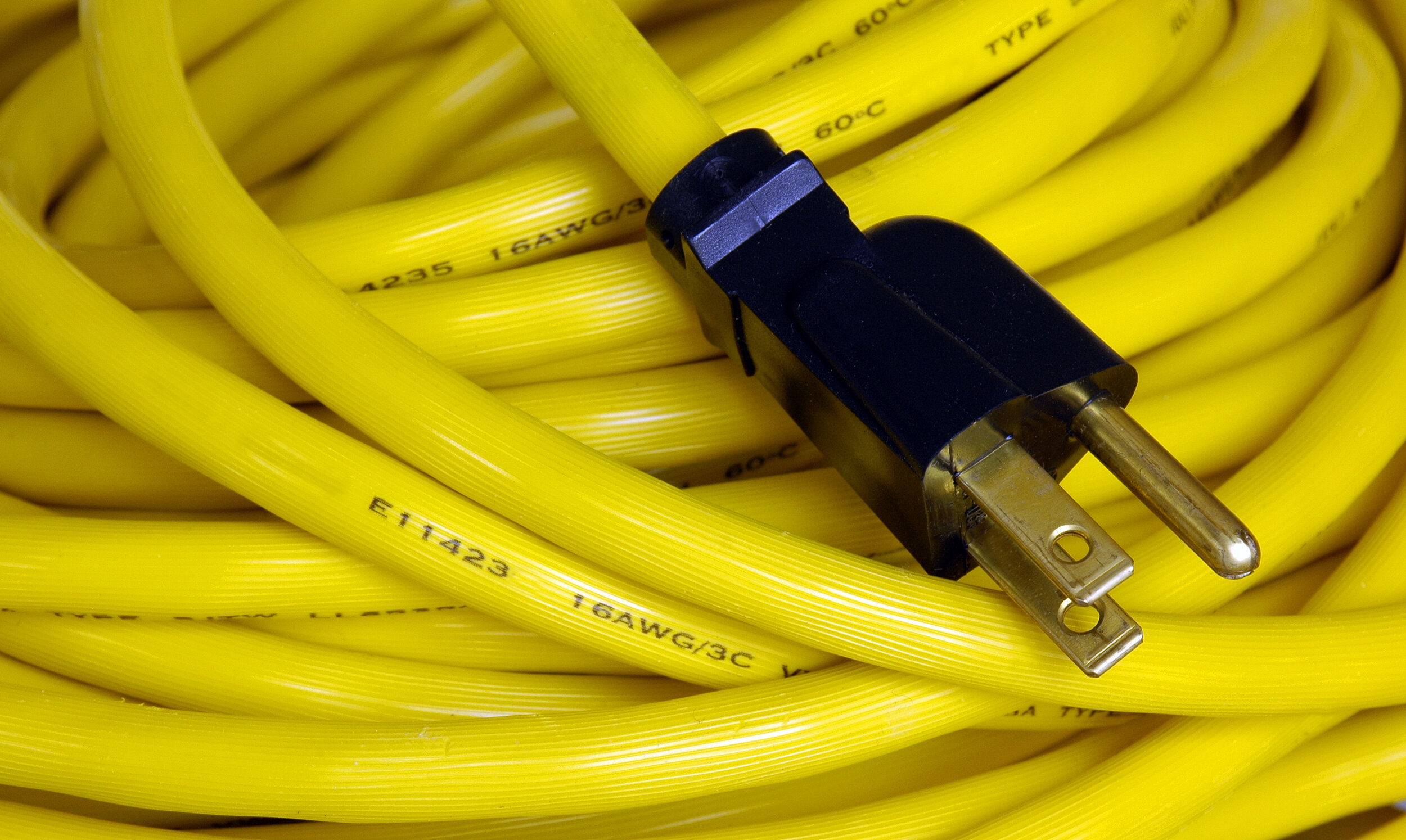Finding the Right Extension Cord
Extension cords can be used indoors and outdoors to stretch the range of your outlets or reach of your fixture. Aside from color and different plug types, it’s easy to assume that most cords are generally the same. However, not all extension cords are created equally. So how do you know if the cord you are currently using for your power tool is the correct one? In this post, we will discuss what to look for when choosing the right extension cord.
Indoor vs. Outdoor
Indoor extension cords have thin insulation (or jacket) around the wires making them unsuitable for use outside. You can use them with lamps, floor fans, Christmas lights, and general electronic devices. Outdoor extension cords are designed with stronger outer jackets to help them withstand rougher and wetter conditions. They are the best choice for larger devices that require more power such as tools and air compressors. Outdoor cords are broken into three groups:
Occasional use cords are best for smaller tools.
Frequent use cords are heavier duty, making them a better choice for larger tools and equipment.
Rugged cords are for high-amperage tools or construction sites.
When selecting your next extension cord, check the labeling. All extension cords have a rating printed on the jacket. Made up of letters, these codes are used to describe the type of jacket and where the cord can be used. The table below shows the most common labels:
This cord is for general indoor use and has a parallel wire with thermoplastic jacket.
For example, let’s say a cord you are looking at has SJTW stamped on it. This means that this general use cord can also be used for hard service both outdoors and in wet locations. Make sure to double-check what the jacket is made of. A cord with a T label is made with thermoplastic. While thermoplastic is water resistant, it is not good for long-term outdoor since it can become brittle in cold weather or soft in extreme heat. A better choice for extended outdoor use is a cord with an E label. This means the jacket is made from thermoplastic elastomer rubber (TPE), which is resistant to sunlight, UV, and extreme weather conditions.
Amperage, Gauge, and Length
Extension cords have a maximum amperage, the highest amount of power (or current) that the cord can safely handle, which can be found on the cord packaging. Running a device that requires a higher amperage than the cord is rated for can cause the cord to overheat. If you are planning on using multiple devices at once, you will want to add up the current requirements for all of the devices to ensure that you don’t overload the cord. If the device is listed in Watts you can use the following formula to determine the amperage:
Amps = Watts/110
The wire gauge is the diameter of the wire. This determines how much current is able to safely pass though the wire. Gauge is measured by American Wire Gauge (AWG) and can be found printed on both the cord jacket and the packaging. Lower AWG numbers are referred to as higher gauges since they are able to handle higher amps. For example, a 16/2 gauge wire has 2 wires with a 16 gauge thickness. Each wire can conduct 10 to 13 amps. The chart below shows the common wire gauges and how many amps they can handle:
As shown in the above chart, length directly affects how much power is able to reach devices. The current meets increased resistance the further it has to travel, causing the voltage to drop by the time it reaches the device. It’s recommended that you buy the length that you need without having a lot of excess. If you need a longer cord purchase one with a larger gauge, like a 12 or a 10-gauge to help negate the voltage drop.
Putting It All Together
Most tools in your garage or workshop can be used with a 14-gauge cord. The best choice would be to go with one that is rated for both indoor and outdoor use. Larger tools like an air compressor would need a 10-gauge. For running Christmas lights, you want to make sure that any cord you use is rated for outdoor use. Pick a 16-gauge extension cord for light runs of 25 feet or less and go with a heavier duty 14-gauge cord for runs over 25 feet. Devices that generate heat, such as hair dryers and space heaters, should not be used with extension cords. These devices can pull 15 amps or more, easily overheating cords and potentially creating fire hazards. Devices that cannot be used with extension cords will have clear warning labels.
Not sure what gauge extension cord is the best choice for your needs? Call 1-800-624-4488 to speak with one of our experts.










